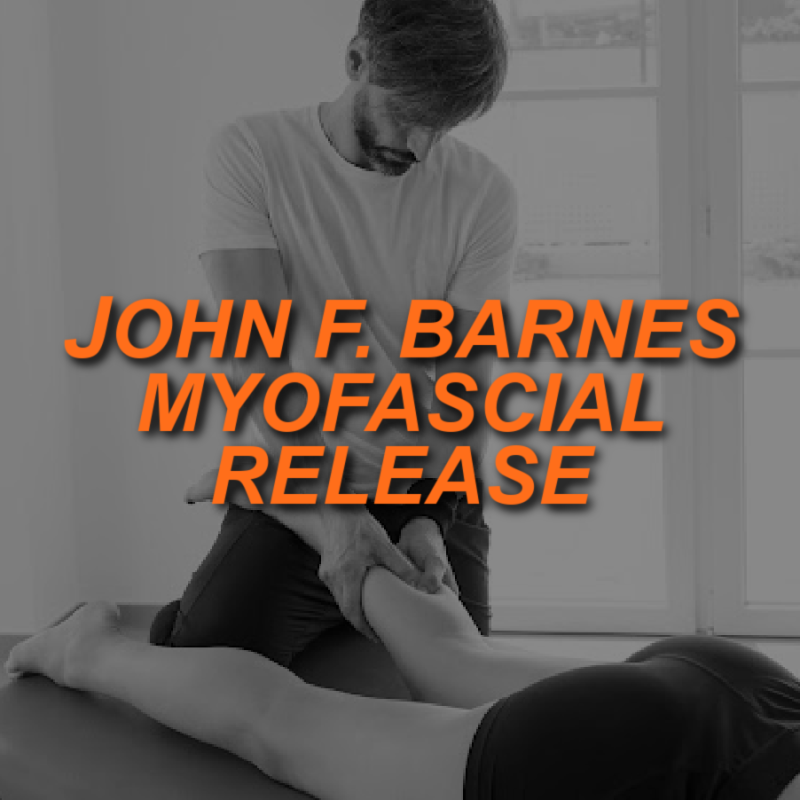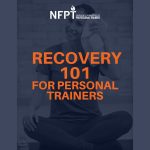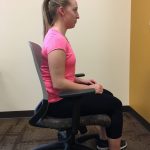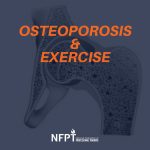
If you haven’t heard about John Barnes Myofascial Release Approach, you and your personal training clients are really missing out. Myofascial release (MFR) is a type of manual therapy that is especially beneficial for post-workout recovery and relieving pain.
MFR releases the fascia by stretching the muscles, which improves range of motion, mobility, and flexibility. Here’s what you need to know about John Barnes’ Myofascial Release Therapy, and how it can benefit you and your clients.
The Benefits of John Barnes’ Myofascial Release Therapy
Before we dive into the technical aspects of John F. Barnes’ MFR Therapy, you’re probably wondering how it can benefit you and your clients. Myofascial release is often used in conjunction with various integrative treatments to achieve the following benefits:
- Improving flexibility and range of motion
- Alleviating symptoms of chronic pain and trauma
- Releasing painful muscle knots and reducing exercise-related soreness
- Improving oxygenation and blood flow in the muscles
- Flushing toxins and metabolites from the muscles
- Improved physical performance and faster workout recovery
- Reducing referral pain and trigger points
- Releases tightness that can pull the body out of alignment and result in overuse of certain joints
What is fascia?
Contrary to popular belief, it’s not your skin that holds your body and organs together. It’s actually fascia. Ok, so what is fascia?
In essence, fascia is a sheet of connective tissue that holds everything in your body together. It’s mainly made of collagen, and it covers every internal part of the body, stabilizing movements, protecting against damage, and reducing friction in the joints.
When you strain your muscles during repetitive movement or physical activity, such as when you’re lifting weights or running, you can cause microscopic tears in the fascia. This leads to pain, inflammation, tension, and reduced mobility. When your muscles are tight, so is your fascia.
What else does the fascial system do?
It’s also interesting to note that every cell in the body has a micro-fascial system. Surgery, trauma, and poor inflammatory responses can create fascial restrictions leading to crushing pressure in pain-sensitive structures throughout the body.
These restrictions aren’t visible with standard tests like x-rays and CT scans, so they often go overlooked or misdiagnosed. New technology allows researchers to view the three-dimensional fibrous fascial web and the fluid within it using laser endomicroscopy.
Researchers have discovered that the fascial system is the main transport system within the body. In other words, everything we eat or drink, the air with breath, hormones, biochemistry, information, and energy that our cells need to thrive travels through the fascial system.
In addition, as our cells excrete waste, this waste must also be transported through the fascia to the lymphatic system. As you can imagine, when the fluid in the fascial system becomes thick and viscous, it can lead to a number of physiological issues in the body.
Unfortunately, science hasn’t understood the importance of the fascia’s fluid substance until recently. This is why many forms of bodywork and massage often produce only temporary results.
What is John Barnes’ Myofascial Release Therapy?
There are many different approaches to myofascial release therapy, but they all focus on releasing the fascia to reduce pain and increase mobility. The John F. Barnes approach is used by doctors and therapists across the globe and there are some key differences you should know about this specific technique.
Traditional myofascial release therapy involves hands-on manipulation of the tissue using kneading massage motions and tools like foam rollers. However, according to John F. Barnes, these techniques actually cause more pain and inflammation by creating additional cross-link tears in the fascia.
John F. Barnes’ Myofascial Release Therapy considers the physics of how fluid moves in the fascia. The fascial web is filled with something called mucopolysaccharide gel. This gel can be gel-like or fluid, depending on the tightness of the fascia.
When you’re experiencing muscular pain, the gel in the fascial web is thick, which inhibits movement. John F. Barnes’ approach uses sustained but gentle pressure to release the fascial restriction barrier. According to Barnes, this technique creates whole-body awareness and resolves restrictions to relieve pain for good.
How does John F. Barnes’ Myofascial Release Therapy work?
What happens during a John F. Barnes’ MFR massage? The therapist applies firm, gentle tension to the tissues in restricted areas. Unlike traditional MFR, no lotion is used and there’s no rubbing or kneading of the area.
The therapist simply holds gentle tension on the area for up to five minutes, depending on the tightness of the fascia. The therapist is mindful of the entire fascia/mind/body web, and as the treatment progresses, the mucopolysaccharide gel becomes more fluid, which allows the collagen to elongate.
Anti-inflammatory interleukins are also released, which promote healing. By the time the hold is released, the damaged tissue is already in the process of authentic healing. Unwinding and rebounding techniques are also incorporated to promote the mind-body connection to ensure complete healing.
Who should consider John Barnes Myofascial Release Therapy?
Just about anyone can benefit from John Barnes Myofascial Release Therapy, however, those who engage in the following activities will especially appreciate its benefits:
- Fitness enthusiasts who exercise regularly
- Anyone who participates in competitive sports
- Those who regularly perform repetitive movements, particularly runners and weightlifters
- Those who stand for long periods
- Those who sit for long periods
- Anyone experiencing chronic muscular pain that has not responded to other methods
Those who suffer from conditions related to inflammation, poor mobility, or poor circulation can also benefit from myofascial release therapy:
-
- Carpal tunnel syndrome
- Temporomandibular joint disorder (TMJ)
- Fibromyalgia
- Chronic headaches or migraines
- Venous insufficiency
- Myofascial pain syndrome
- Those who experience muscle pain or stiffness due to pore posture
- Those who are recovering from a chronic or acute injury
Where Can You Receive John Barnes’ Myofascial Release Therapy?
Many different types of health professionals can provide John Barnes’ Myofascial Release Therapy, including chiropractors, physical therapists, massage therapists, sports medicine specialists, and osteopathic physicians. You may find a certified practitioner through the John Barnes website as well.
You’ll want to ensure that the practitioner you choose has sufficient training and experience in the technique. The sessions will take place in a health center or outpatient clinic and generally last between 30-50 minutes.
Consistency is key, so be prepared to receive repeated treatments over weeks or months, depending on the severity of your condition. Your progress will be determined by how much your range of motion improves and how much your pain decreases.
 Nicole is an experienced content writer with a passion for all aspects of wellness. She worked a side gig at a yoga studio for years before becoming a mom, and absolutely fell in love with holistic and alternative therapies during her first pregnancy. She’s been proclaimed the “health nut” amongst family and friends, and when she’s not writing, Nicole can be found studying to become a health coach and reading up on all aspects of healthy living!
Nicole is an experienced content writer with a passion for all aspects of wellness. She worked a side gig at a yoga studio for years before becoming a mom, and absolutely fell in love with holistic and alternative therapies during her first pregnancy. She’s been proclaimed the “health nut” amongst family and friends, and when she’s not writing, Nicole can be found studying to become a health coach and reading up on all aspects of healthy living!







